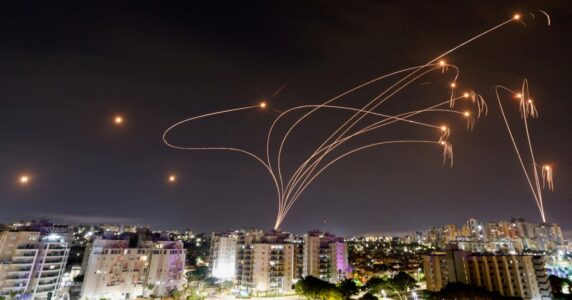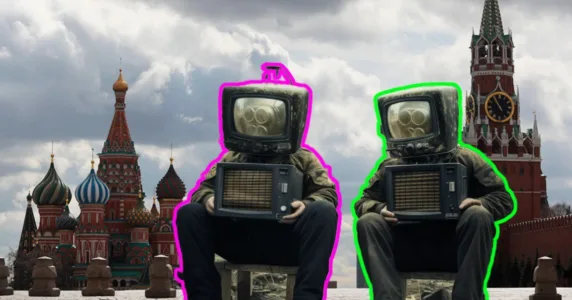Navigation and useful materials
“Ukrainians will freeze this winter.” “The Russians will destroy all power stations.” “Ukraine is doomed.”
This is a list of key messages that have been systematically disseminated by the network of anonymous Telegram channels since mid-autumn. Back in 2021, the SSU officially informed the public that “Legitimny,” “Resident,” “Spletnitsa,” “ZeRada,” and related resources work for the special services of Russia and try to destabilize the socio-political situation in Ukraine.
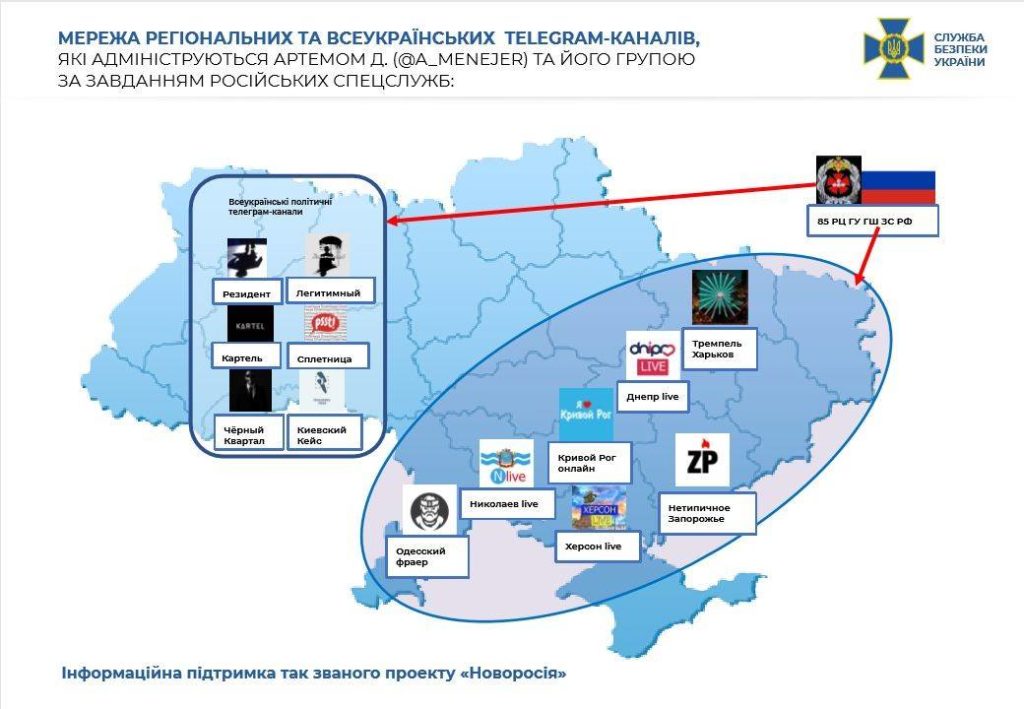
Despite this, the Ukrainian audience of the mentioned channels remains huge, and messages and calls in them are periodically relayed in house chats.
The Centre for Strategic Communication and Information Security explains how, through anonymous Telegram channels, Russians are trying to demoralize Ukrainians and sow disbelief among them.
Darkness and Hopelessness. Messages in Telegram channels
The campaign to demoralize Ukrainians is based on grim descriptions of apocalyptic pictures of the future of Ukrainian cities, which are supposed to be in the darkness and cold as a result of missile attacks. An important component is the regular repetition of simple messages that intertwine with supposedly neutral information messages. Readers are persuaded that:
● Russian missile attacks will last indefinitely, and it is impossible to defend against them;
● Ukrainian critical infrastructure will soon be out of service, and the energy sector will not be able to maintain it;
● prolonged blackouts will lead to a humanitarian catastrophe and a significant increase in crime rates in cities;
● the Ukrainian government will not be able to cope with the challenges and will be helpless in the context of the crisis.
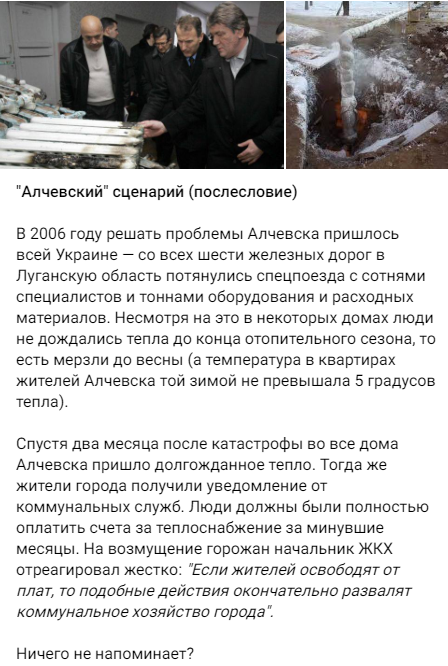
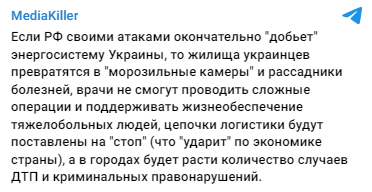
The first two messages are regularly answered by the Ukrainian military and energy specialists. The efficiency of the Ukrainian air defence has increased significantly: during a massive shelling of the energy infrastructure on October 10, more than 50% of Russian missiles were shot down (43 out of 84), on November 23 — more than 70% (51 out of 70), on December 5 — 85% (60 out of 70).
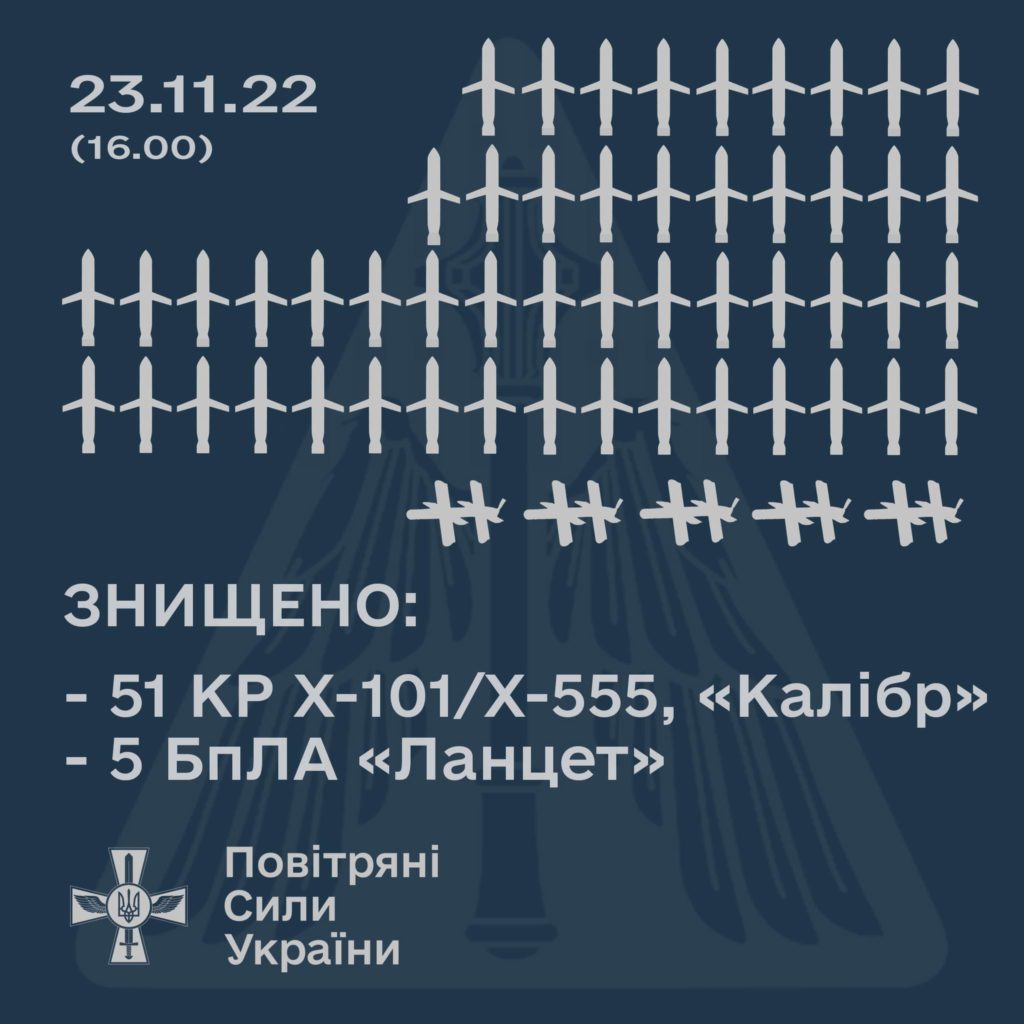

The efforts of energy specialists are aimed not only at prompt repair of damaged objects and restoration of energy supply, but also at maintaining the network in working condition by balancing it. The existing network is powerful and cannot be completely disrupted. But it is also impossible to avoid emergency and stabilization outages.
Restriction of street lighting in the conditions of a shorter daylight in autumn-winter has had a negative impact on road safety, but did not lead to a deterioration of the criminogenic situation.
In planning a full-scale invasion, the Kremlin apparently counted on the “helplessness of the Ukrainian government.” But Ukraine did not “crumble” from the first blows and was able to inflict painful defeats on the enemy both on the battlefield and on the international arena. Our state has proven institutional stability in the conditions of war and secured the powerful support of partners. Attacks on energy infrastructure are a difficult test that Ukraine will cope with.
At the same time, Telegram channels are trying to cause as many disruptions in society as possible, channel the discontent of Ukrainians into hatred for central government, local government, residents of other regions, and even their own neighbours, who get more light. Consumers of content are diligently persuaded that they are allegedly being treated unfairly.


The publications are based on both real information messages and outright fakes. The first are statements by Ukrainian officials and excerpts from publications in foreign media. Promotion of the messages the Russians need is realized through the “author’s comment.” Among others, the most common are:
● excerpts from “letters of dissatisfied readers” (although there is no feedback from channels);
● photo of “official documents” around which conspiracy is built;
● excerpts from fake “analytical notes” provided by “sources in the Presidential Office.”
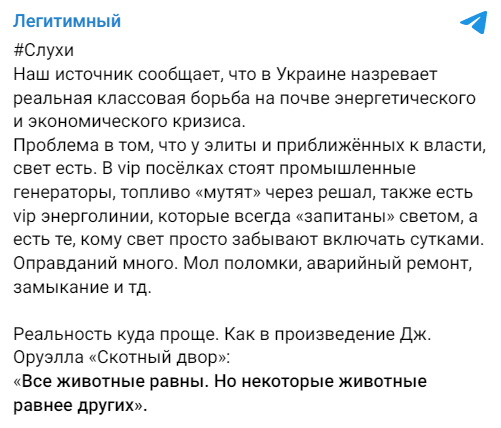
A major vector in the work on demoralization of Ukrainians is a smear campaign about Ukrainian refugees in EU countries, primarily Poland. Readers should get the impression that:
- refugees are left to fend for themselves, their support is constantly decreasing, and the government of Ukraine ignores the problems of citizens abroad;
- Ukrainians regularly get into conflicts, provoking them or becoming victims of attacks by aggressive local residents.
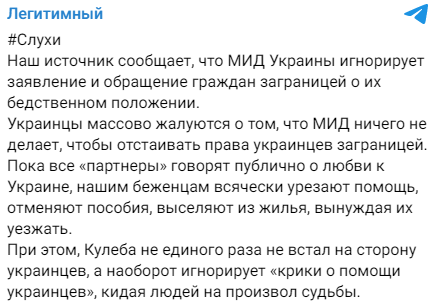
Similar messages are spread by Russian propaganda resources that do not mimic Ukrainian ones. This campaign is aimed at making Ukrainians feel hopeless, since “nobody is waiting for us,” and “there is nowhere to run.” This is again meant to push the idea that the only way out is to stop resistance and agree to “peace at any cost.” Channel administrators make sure to compare those who left and those who stayed to create an additional fake polarization line in society.
The main thing is despair. What the enemy wants
The dissemination and numerous repetitions of these mentioned messages are aimed at demoralizing Ukrainians and devaluing the heroic struggle against the invaders. Russian propagandists are working to:
- deprive Ukrainians of faith in victory and convince them that resistance is futile;
- push the idea that it is not Russians responsible for any new destruction, but the Defence Forces of Ukraine and the military and political leadership refusing to yield to the enemy;
- undermine citizens’ trust in their own army, reduce the level of support for military personnel and volunteers, in particular financial support;
- convince Ukrainian society that there is no alternative to making concessions to the enemy and that the loss of territories and sovereignty is inevitable.
Especially cynical are the attempts to depict the Russian strikes as acts of retaliation: for the destruction of the Crimean bridge or other sabotage on the territory of the Russian Federation. This way, they shift responsibility from the aggressor to the victim, trying to instil Stockholm syndrome in Ukrainians.
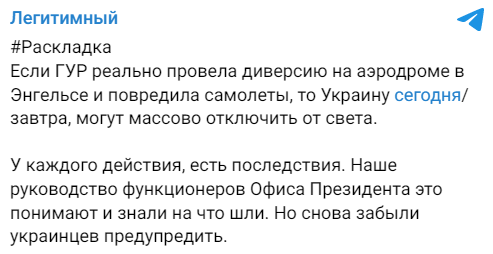

Mimicking the Ukrainian ones, the aforementioned Telegram channels supposedly “sympathize” with the suffering of Ukrainians and even condemn the actions of Russia (while making sure to discredit the Armed Forces and the military and political leadership of Ukraine). But certain phrasing gives away the true Russian nature of these channels.
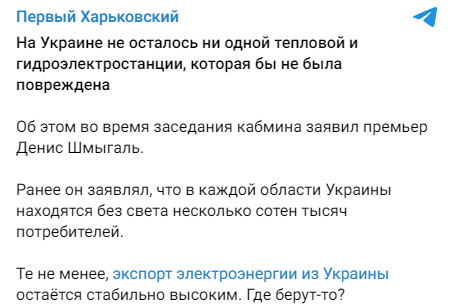
Therefore, the main task of this information operation is to spread despair among Ukrainian society and fuel the desire to end the war, or at least to stop the shelling of the infrastructure, giving the aggressor what he wants.
It should be kept in mind that when the Kremlin signals that it wants “negotiations,” a “ceasefire” or a “truce,” the real intention is to achieve an operational pause to restore and increase the capacity of ground forces. This is the purpose of both public and private efforts of the Russian diplomacy and missile terror against Ukrainian cities. Anonymous Telegram channels ensure information support for this operation and work with public opinion, trying to manipulate Ukrainians and undermine the unity in society.
Such “suggestions” should be viewed very critically. Mass graves found on the liberated territories of Kharkiv and Kherson oblasts have demonstrated better than anything that the Russian occupation is much more dangerous for civilians than shelling or blackouts. Only expelling the enemy from Ukraine will guarantee safety and save lives.
Centre for Strategic Communication and Information Security
If you have found a spelling error, please, notify us by selecting that text and pressing Ctrl+Enter.
